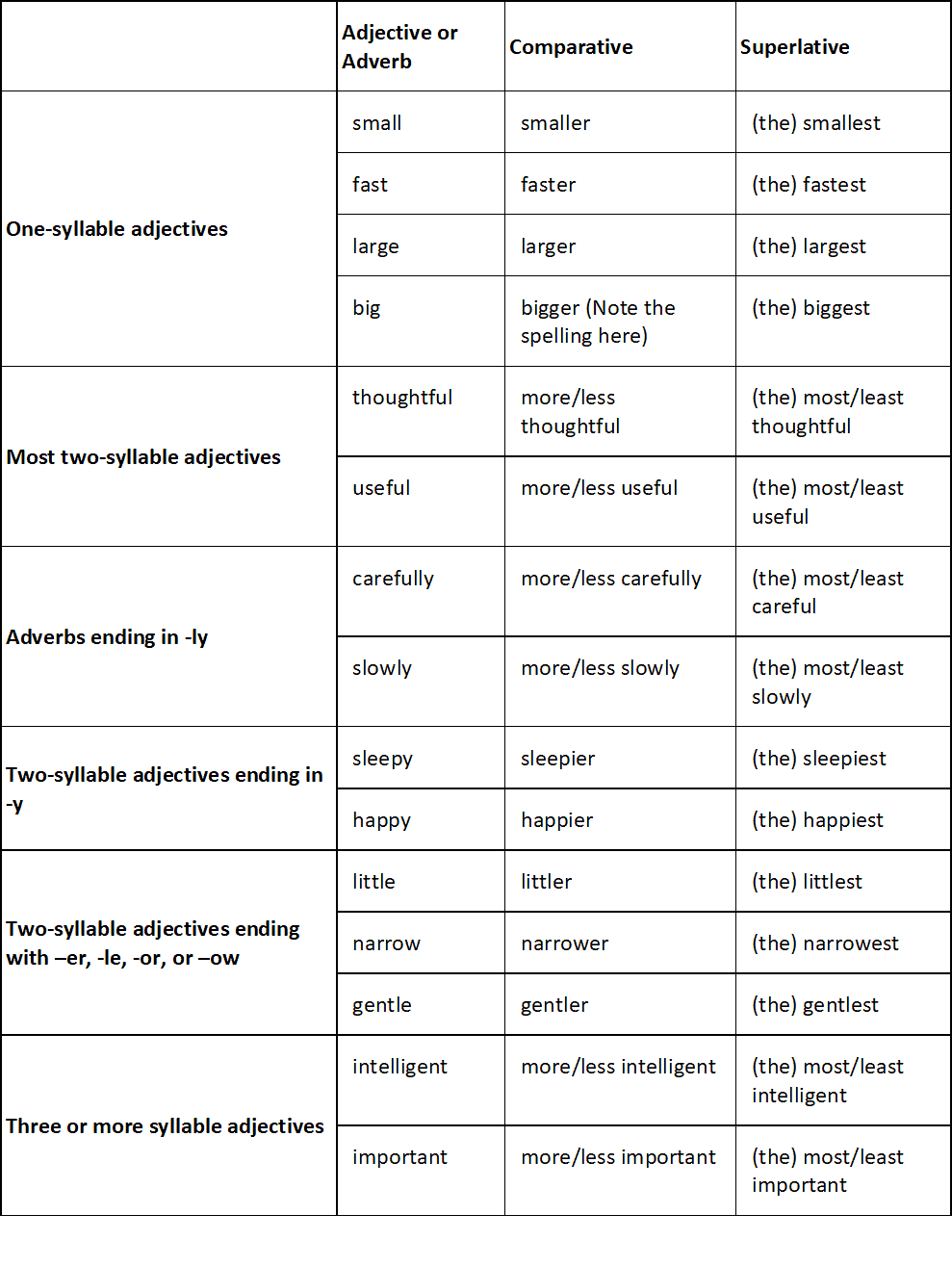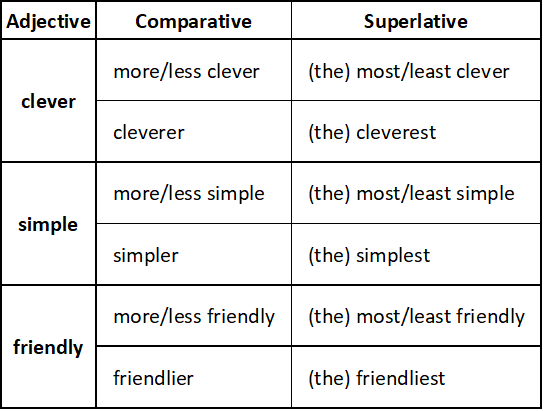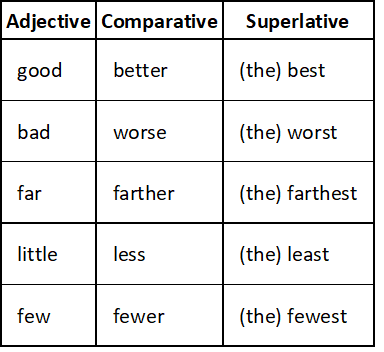Adjective & Adverb: Comparative Structures - GMAT PDF Download
Adjectives and Adverbs can be used to make comparisons.
The comparative form is used to compare two people, ideas, or things. However, the superlative form with the word "the" is used to compare three or more. Comparatives and Superlatives are often used in writing to hedge or boost language.
Here are some rules and examples of how to form the comparatives and superlatives:
General Rules for Comparatives and Superlatives

Two-Syllable Adjectives That Follow Two Rules (either form is correct)

Irregular Adjectives
To find other comparative structures, look up the word in an online dictionary such as Merriam Webster. If you are a multilingual writer, you may find Merriam Webster’s Learner’s Dictionary helpful for level-appropriate definitions and examples.
To form comparative sentences, use the comparative with the word "than." Here are some examples:
- Fewer participants volunteered for the study than I had anticipated.
- Business school was less expensive than law school.
- His application was processed more quickly than he thought.
It is also possible to use "(not) as…as" to express similarity or differences. Here are some examples:
- Reading is as enjoyable as writing.
- The results were as conclusive as in previous studies.
- Finding participants for the study was not as easy as I thought.
- Her level of expertise was not as extensive as her employer had hoped.
Transitions such as "and," "but," "in addition," "in contrast," "furthermore," and "on the other hand" can also be used to show comparison. See our website page on transitions and sentence structures and types of sentences for more information and examples.
Some Common Errors With Comparisons
Common Error 1: Using the comparative instead of the superlative
- INCORRECT: He is the happier person I know.
- REVISION: He is the happiest person I know.
- INCORRECT: She is the more thoughtful person I know.
- REVISION: She is the most thoughtful person I know.
Common Error 2: Doubling up comparisons or superlatives
- INCORRECT: His car is more faster than mine.
- REVISION: His car is faster than mine.
- INCORRECT: His car is the most fastest.
- REVISION: His car is the fastest.
Common Error 3: Using empty comparisons (part of the comparison is missing)
- INCORRECT: The participants were more experienced.
- REVISION: The participants were more experienced than the previous participant pool.
- INCORRECT: The line moved more slowly.
- REVISION: The line moved more slowly than the line next to it.
Common Error 4: Using ambiguous comparisons (the comparison has more than one possible meaning)
- INCORRECT: She likes pizza better than her husband. (Does this mean that pizza is better than her husband?)
- REVISION: She likes pizza better than her husband does. (Now it is clear that the comparison is who likes pizza more.)
- INCORRECT: Her suitcase is bigger than John. (Does this mean that the size of the suitcase is larger than another person?)
- REVISION: Her suitcase is bigger than John’s. (Now it is clear that the comparison is about two suitcases, not about John.)
Common Error 5: Missing the article “the” in the superlative
- INCORRECT: Finishing quickly was least important task.
- REVISION: Finishing quickly was the least important task.
- INCORRECT: The youngest girl was also littlest.
- REVISION: The youngest girl was also the littlest.
FAQs on Adjective & Adverb: Comparative Structures - GMAT
| 1. What are the comparative structures tested in the GMAT? |  |
| 2. How can I improve my understanding of comparative structures for the GMAT? |  |
| 3. Are there any specific rules or exceptions to be aware of when using comparative structures in the GMAT? |  |
| 4. Can you provide some examples of comparative structures in sentences for the GMAT? |  |
| 5. How can I apply my knowledge of comparative structures to improve my performance in the GMAT? |  |



















